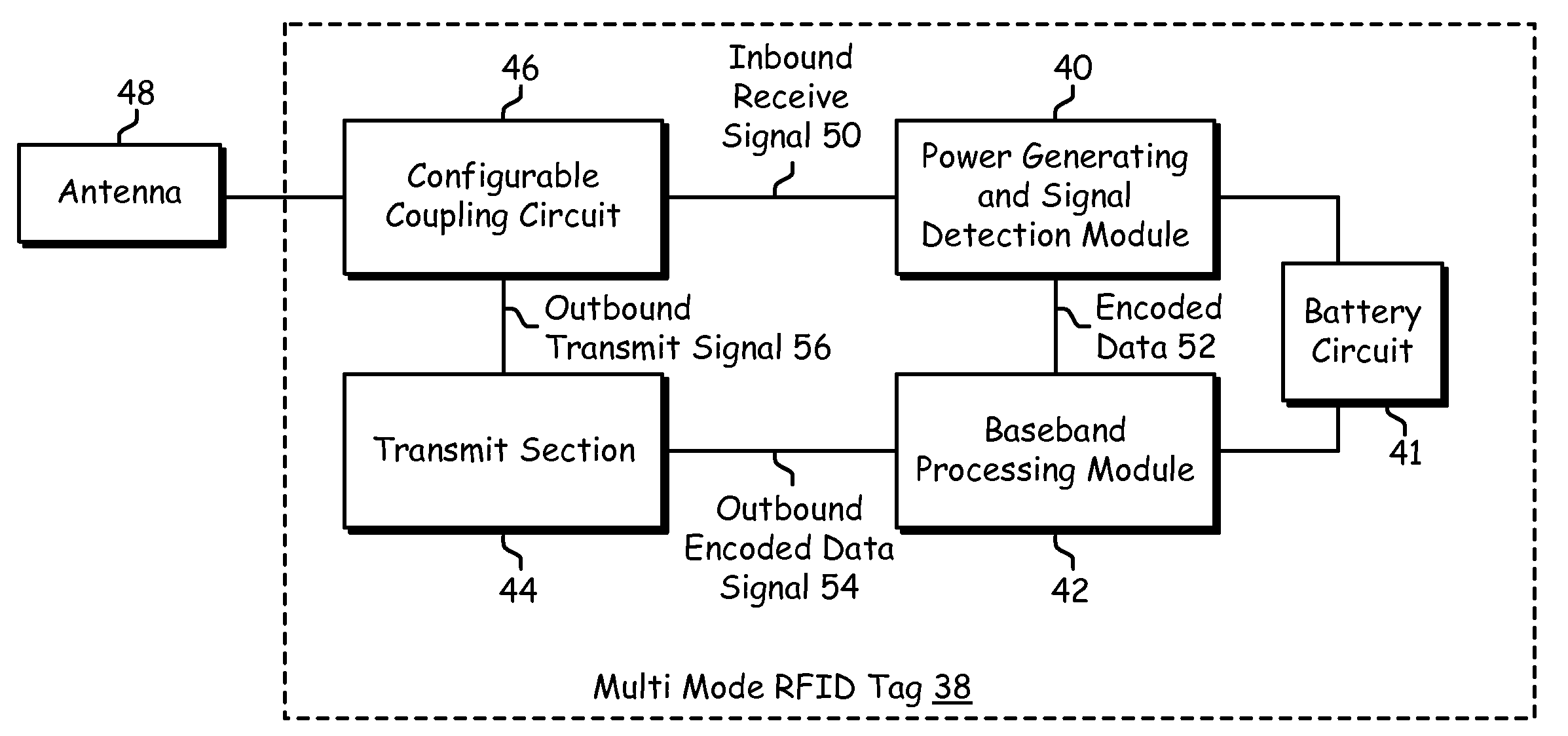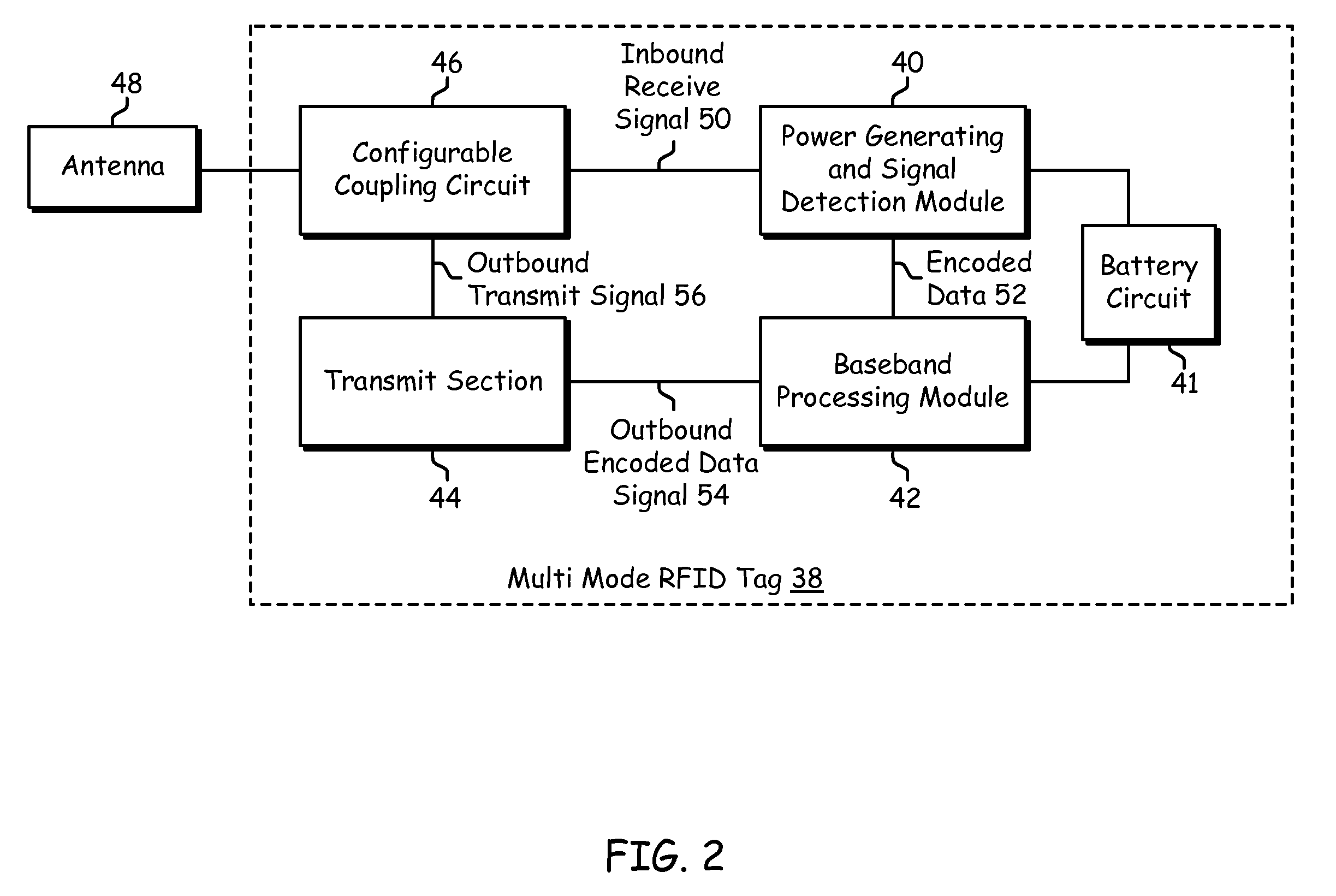Multi-mode RFID tag architecture
a tag architecture and multi-mode technology, applied in the field of communication systems, can solve the problems of inability to integrate rfid tags, large antennas of tag coils in comparison to other modules, and inability to detect rfid tags
- Summary
- Abstract
- Description
- Claims
- Application Information
AI Technical Summary
Problems solved by technology
Method used
Image
Examples
Embodiment Construction
[0032]FIG. 1 is a schematic block diagram of an RFID (radio frequency identification) system that includes a computer / server 12, a plurality of RFID readers 14-18 and a plurality of RFID tags 20-30. The RFID tags 20-30 may each be associated with a particular object for a variety of purposes including, but not limited to, tracking inventory, tracking status, location determination, assembly progress, et cetera. The RFID tags may be active devices that include internal power sources or passive devices that derive power from the RFID readers 14-18.
[0033]Each RFID reader 14-18 wirelessly communicates with one or more RFID tags 20-30 within its coverage area. For example, RFID tags 20 and 22 may be within the coverage area of RFID reader 14, RFID tags 24 and 26 may be within the coverage area of RFID reader 16, and RFID tags 28 and 30 may be within the coverage area of RFID reader 18. In one mode of operation, the RF communication scheme between the RFID readers 14-18 and RFID tags 20-3...
PUM
 Login to View More
Login to View More Abstract
Description
Claims
Application Information
 Login to View More
Login to View More - R&D
- Intellectual Property
- Life Sciences
- Materials
- Tech Scout
- Unparalleled Data Quality
- Higher Quality Content
- 60% Fewer Hallucinations
Browse by: Latest US Patents, China's latest patents, Technical Efficacy Thesaurus, Application Domain, Technology Topic, Popular Technical Reports.
© 2025 PatSnap. All rights reserved.Legal|Privacy policy|Modern Slavery Act Transparency Statement|Sitemap|About US| Contact US: help@patsnap.com



